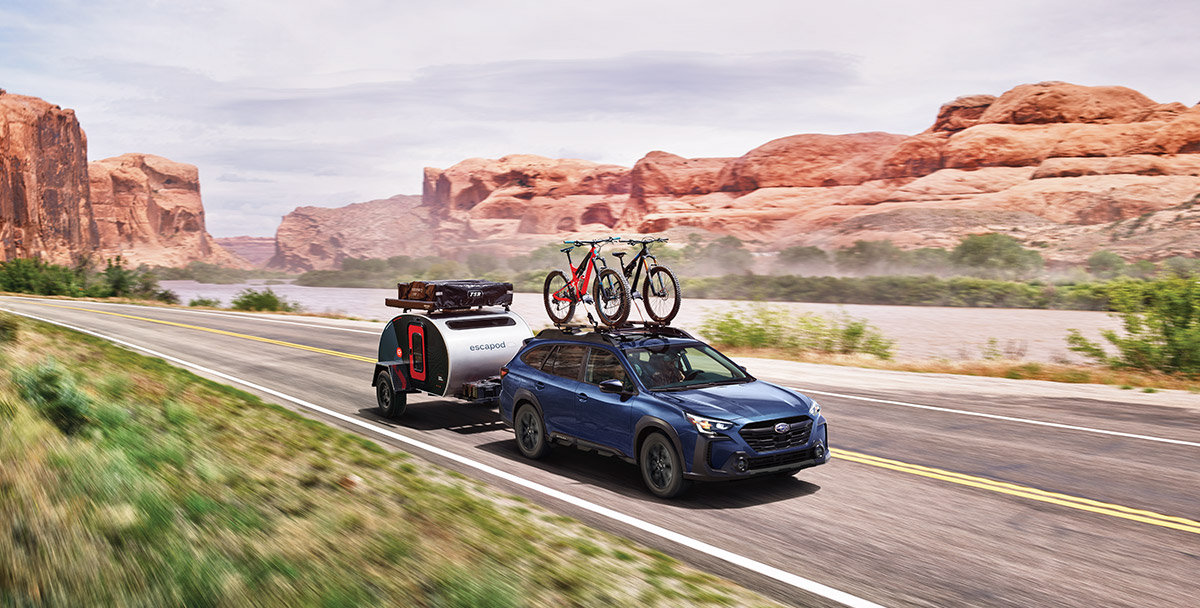To a first-timer, overlanding – a style of camping that bypasses standard campgrounds for remote, off-road terrain – may seem overwhelming. Overlanders come prepared to eat, sleep and hike without the safety net of being able to drive a few miles back to town.
Beyond that, maybe you know what I call the “broverlander” – someone whose vehicle is dripping in big-ticket overlanding gear. All of this can paint a picture of a hobby that’s expensive or inaccessible. In fact, overlanding is neither of those things.
If you already camp and own a vehicle with all-wheel drive and class-leading ground clearance, you don’t need much more to overland. I know from experience: I go overlanding in the mountains many times a year, and I’ve never even considered a $1,400 cooktop or $250 jerrycan. Instead, here are some less-pricey staples to rely on:
Compact Water Container
The HydraPak Expedition™ water container ($65) holds eight liters and, unlike more expensive jerrycans, takes up next to no space when empty.
Simple Travel Stove
For the overlanding minimalist, Owen Mesdag, an experienced overlander and product manager for Outdoor at Dometic, suggests a single-burner butane stove. These stoves, such as the Iwatani VA-30 ($48) or the Eureka SPRK+ ($60), can cook a whole meal and are readily available online and from stores such as REI.
Fix-It Gear
A can of Fix-a-Flat® ($9-$17) and a basic but reliable 12-volt pump that plugs into your vehicle’s power outlet, such as the portable Kensun Air Compressor and Tire Inflator ($70), can get you on your way faster than changing a tire.
Just be sure your spare is fully inflated in case of larger punctures that can’t be fixed the quick way. The Subaru Outback Wilderness and Forester Wilderness are both equipped with a full-size spare on a matching wheel.
Quality Tent
A tent will be the priciest item you need, but the good news is that if you already have one for camping, it will work for overlanding too. If you’re looking to invest in something new, MSR’s spacious Habitude™ ($560 for a 4-person tent) strikes a great balance between durability, weight and comfort.
Pads for Sleeping and Sitting
Again, if you already camp, the sleeping pad you have will double for overlanding. I like Exped’s Dura line, including the Dura 3R ($150). Dura pads are thicker than some options designed for toting in a hiking pack and are a good value for the price.
Mesdag suggests bringing along a Therm-a-Rest® Z Lite™ ($40-$55) for sitting, lying or kneeling if you’re airing down tires, fixing a flat or just hanging out.

Tried-and-True Cargo Carrier
With the appropriate Thule® crossbar set from the Subaru Accessories catalog, you can mount the Thule Heavy-Duty Roof Cargo Basket ($460), complete with a cargo net and wind deflector. When you’re not overlanding, this setup is also handy to carry anything from your mountain bike to a Christmas tree.
A Way To Charge
Getting off the grid is great but so is staying connected in an emergency. The Goal Zero® Yeti® 150 Portable Power Station ($200) can charge at home or via your vehicle’s power outlet, but you can also charge it using add-on solar panels. It provides 14Ah of juice, enough to power your laptop and charge your phone with plenty to spare.
Reliable Apps
Gaia GPS (free or $40/year for premium version) is a go-to for planning your route, as it includes all kinds of access roads, weather data and other information that might not pop up on Google Maps.
For off-road sections, BFGoodrich® OnTrail (free or $35/year for premium version) offers an easy interface to find trails and even geotagged spots to camp, take in the view or try your hand at some more technical off-roading.
For gear designed for your Subaru model, check the Genuine Subaru Accessories catalog.





